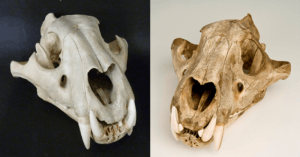We’ve Added 600 New Labels, But Can we Label Everything?
By Jack Ashby, on 6 August 2014
The answer to that question is no, we can’t label everything. We’ve just installed 600 new labels in the Museum, as a result of visitor feedback. But have we got the balance right?
There are about 6000 animal specimens on display in the Grant Museum (which, incidentally, is more than is on display at the Natural History Museum), including about 2300 in the Micrarium. The room is only about 250m², and this means our displays are very densely packed. We are hugely keen on specimens at the Grant – providing close access to real objects is one of our biggest selling points. For this reason (and also because we don’t have a lot of storage space), we put as much out on display as is logistically possible.
Drawbacks of dense displays
As much as people tell us they think of the Grant Museum as a room crammed with amazing rare things creating with an atmosphere that promotes exploration, filling every spare gap with objects does have its downsides. Some people think that displays should give each object its own space to breathe, allowing people to concentrate on them, but we’ve made the decision to go in a different direction. Plenty of other museums use this sparse display philosophy – but if you want to be immersed in a real and different celebration of objects, come to the Grant Museum.
The major drawback of jam-packed cabinets is that there isn’t a lot of room for labeling. (more…)
 Close
Close







